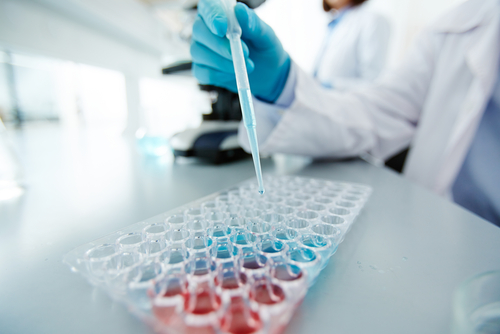New Cellular Model Can Reconstruct Entire Process of Lewy Body Formation in Parkinson’s Disease, Study Says

Scientists have developed a new cellular model that can help reconstruct the entire process of Lewy body formation — a key event that underlies neurodegeneration in Parkinson’s disease — and that could potentially be used to evaluate the effect of therapeutics on the toxic protein buildup observed during this process.
The study, “The process of Lewy body formation, rather than simply α-synuclein fibrillization, is one of the major drivers of neurodegeneration,” was published in PNAS.
Parkinson’s is a multisystem neurodegenerative disorder with motor and non-motor features caused by the death of midbrain dopamine-producing neurons. These nerve cells are thought to die as a consequence of the aggregation, or clumping together, of a protein called alpha-synuclein in small fiber-like, or insoluble fibril, structures known as Lewy bodies.
Although evidence indicates abnormal alpha-synuclein accumulation is essential for the development of Parkinson’s disease, not much is known about the molecular and cellular processes that control the transformation of healthy alpha-synuclein protein into insoluble fibrils and, consequently, their clumping into Lewy bodies.
To better understand these biological events at a genetic, molecular, biochemical, structural, and cellular level, researchers at the Brain Mind Institute in Lausanne, Switzerland, tracked the development of Lewy bodies from beginning to end.
They began by using mouse primary neurons grown in lab dishes. They then added a small amount of alpha-synuclein fibrils that would be used as “seeds” that grew by recruiting neuron-produced alpha-synuclein.
“This approach has proven incredibly useful in modeling the formation of alpha-synuclein aggregates linked to diseases like Parkinson’s,” study senior author Hilal Lashuel, PhD, said in a press release.
Scientists usually monitor cell cultures for two weeks, but Lashuel’s team decided to go beyond that time limit. Twenty-one days after seeding, the team observed Lewy body-like inclusions in approximately 22% of the neurons.
These lab-grown Parkinson’s-related structures shared between 15%-20% of their protein content with “natural” Lewy bodies, which, given the slower growth rate in the laboratory versus the human brain, is an encouraging finding.
Importantly, the Lewy-body-like clump structures had not appeared by the usual two-week cutoff point, highlighting the need to prolong the experiments to observe features characteristic of neurodegeneration.
“Time, being patient and using a swiss army knife analytical approach is all that was required,” Lashuel said.
The formation of Lewy bodies involved a complex interplay between alpha-synuclein fibrillization, protein modifications, and interactions between alpha-synuclein clumps and membranous organelles, including mitochondria, which produce energy for cells.
In addition, the researchers found that Lewy body formation — rather than simply alpha-synuclein fibril accumulation — were the major drivers of neurodegeneration, since these structures disrupted cellular functions such as energy production, and compromised nerve cell communication by changing the properties of synapses, or the junctions between nerve cells that allows them to communicate.
Formation of Lewy bodies does not occur simply through the continued formation, growth, and assembly of alpha-synuclein fibrils “but instead arises as a result of complex [alpha-synuclein] aggregation-dependent events that involve the active recruitment and sequestration of proteins and organelles over time,” the researchers wrote.
“Our results generally agree with recent findings reported on Lewy bodies from Parkinson’s disease brains,” Lashuel said. “But while previous studies only offered snapshots of fibril evolution, our model can reconstruct the entire process of Lewy body formation, making it a powerful platform for elucidating the relationship between fibrillization and neurodegeneration in Parkinson’s and other diseases, and to screen for novel potentially disease modifying therapies.”






